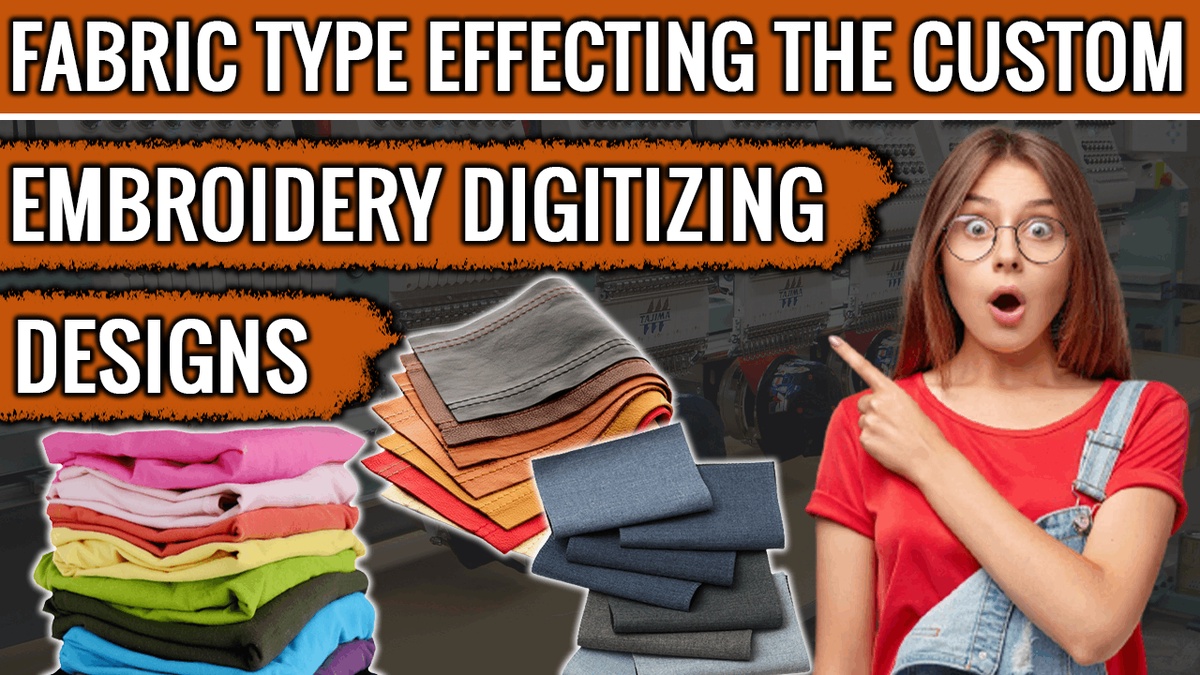Embroidery digitizing is a versatile and creative process that allows designers to translate their ideas into intricate and detailed embroidered designs. However, the type of fabric used plays a crucial role in the outcome of the embroidery, affecting everything from stitch quality and density to design aesthetics and durability. In this comprehensive guide, we will explore the impact of fabric type on custom embroidery digitizing designs, discussing how different fabrics influence the embroidery process and offering tips for achieving optimal results on various fabric types.
Understanding Fabric Types in Embroidery
Before delving into the impact of fabric types on online embroidery digitizing designs, it's essential to understand the characteristics of different fabrics commonly used in embroidery:
1. Cotton
Cotton is a popular choice for embroidery due to its versatility, durability, and ease of stitching. It offers a smooth and stable surface for embroidery, making it suitable for a wide range of designs and techniques. Cotton fabrics come in various weights and weaves, from lightweight voile and poplin to heavyweight denim and canvas.
2. Polyester
Polyester fabrics are known for their strength, resilience, and colorfastness, making them ideal for embroidery projects that require vibrant and long-lasting colors. Polyester blends, such as polyester-cotton or polyester-rayon, offer a combination of the best qualities of both fibers, making them suitable for a wide range of applications.
3. Linen
Linen is a natural fiber known for its crisp texture, breathability, and classic appearance. While linen can be more challenging to embroider due to its tendency to wrinkle and shrink, it offers a unique and luxurious look that is perfect for elegant and timeless designs.
4. Silk
Silk is prized for its lustrous sheen, softness, and drape, making it a popular choice for high-end embroidery projects. Silk fabrics, such as silk satin, silk chiffon, and silk organza, offer a luxurious backdrop for delicate and intricate embroidery designs, adding a touch of elegance and sophistication to any garment or accessory.
5. Denim
Denim is a durable and rugged fabric commonly used in casual and contemporary embroidery designs. It offers a sturdy canvas for embroidery, with its characteristic twill weave and indigo dye providing a unique and textured backdrop for embellishments such as patches, logos, and decorative stitches.
Impact of Fabric Type on Embroidery Digitizing Designs
The type of fabric used in embroidery has a significant impact on the digitizing process and the final outcome of the embroidered design. Here's how different fabric types affect custom embroidery digitizing designs:
1. Stitch Density
Different fabrics have varying densities and thicknesses, which can affect the density and spacing of stitches in the embroidered design. Thicker fabrics like denim and canvas may require denser stitch patterns to ensure adequate coverage and stability, while lighter fabrics like silk and chiffon may require lighter stitch densities to prevent puckering and distortion.
2. Stitch Direction
The weave and texture of the fabric can influence the direction of stitches in the embroidered design. Fabrics with a tight weave, such as cotton and polyester, may require stitches to be placed closer together to ensure smooth and even coverage. On the other hand, fabrics with a loose weave, such as linen and silk, may allow for more open and airy stitch patterns, creating a more delicate and ethereal effect.
3. Thread Selection
The type of thread used in embroidery can also be influenced by the fabric type. For example, thicker fabrics like denim and canvas may require heavier thread weights to ensure adequate coverage and durability, while lighter fabrics like silk and chiffon may benefit from finer thread weights to prevent bulkiness and distortion.
4. Design Complexity
The type of fabric used can impact the complexity and intricacy of the embroidered design. Fabrics with a smooth and stable surface, such as cotton and polyester, are well-suited for detailed and intricate designs with fine lines and small details. On the other hand, fabrics with a textured or uneven surface, such as linen and denim, may require simpler and bolder designs to ensure clarity and readability.
Tips for Achieving Optimal Results on Different Fabric Types
To achieve optimal results in custom embroidery digitizing designs, consider the following tips for working with different fabric types:
-
Select the Right Stabilizer: Choose a stabilizer that is compatible with the fabric type and design complexity. Use heavyweight stabilizers for thicker fabrics and lightweight stabilizers for lighter fabrics to provide support and prevent distortion during embroidery.
-
Adjust Stitch Settings: Experiment with different stitch settings, such as density, length, and direction, to achieve the desired effect on each fabric type. Make adjustments as needed to ensure smooth and even stitching throughout the design.
-
Use Test Stitching: Always test stitch your designs on scrap fabric before embroidering the final product. This allows you to assess how the design looks and performs on different fabric types and make any necessary adjustments before stitching on the actual garment or accessory.
-
Consider Fabric Grain: Pay attention to the grain of the fabric when positioning the design for embroidery. Align the design with the grain of the fabric to ensure that stitches lay flat and evenly on the surface, reducing the risk of puckering or distortion.
-
Experiment with Thread Types: Explore different types of embroidery thread, such as rayon, polyester, and metallic, to achieve different effects on different fabric types. Consider factors such as sheen, color, and texture when selecting thread for each project.
Conclusion
The type of fabric used in custom embroidery digitizing designs has a significant impact on the outcome of the embroidered design, affecting everything from stitch density and direction to design complexity and durability. By understanding how different fabric types influence the embroidery process and implementing the appropriate techniques and strategies, designers can achieve optimal results on a wide range of fabrics, creating stunning and unique embroidered designs that captivate and inspire.
Zdigitizing
We initially established our embroidery digitizing company in 2002, which later expanded to become a worldwide digitizing business. We have a highly-skilled digitizing team capable of handling even the most challenging and complex designs with precision for embroidery digitization.
Our pleasure is to be embroidery digitizers and give embroidery digitizing and vector art services to embroiderers and printers worldwide. Our customers provide us photos of their logos, and we convert them into embroidery formats for use on computerized embroidery machines.
When you interact with Zdigitizing services, you can be sure that you’re working with experts who know what they are doing and how to do the project correctly.
Embroidery digitizing is a process that convert image to embroidery file using embroidery software that allows a machine to understand the needle’s path easily.


No comments yet